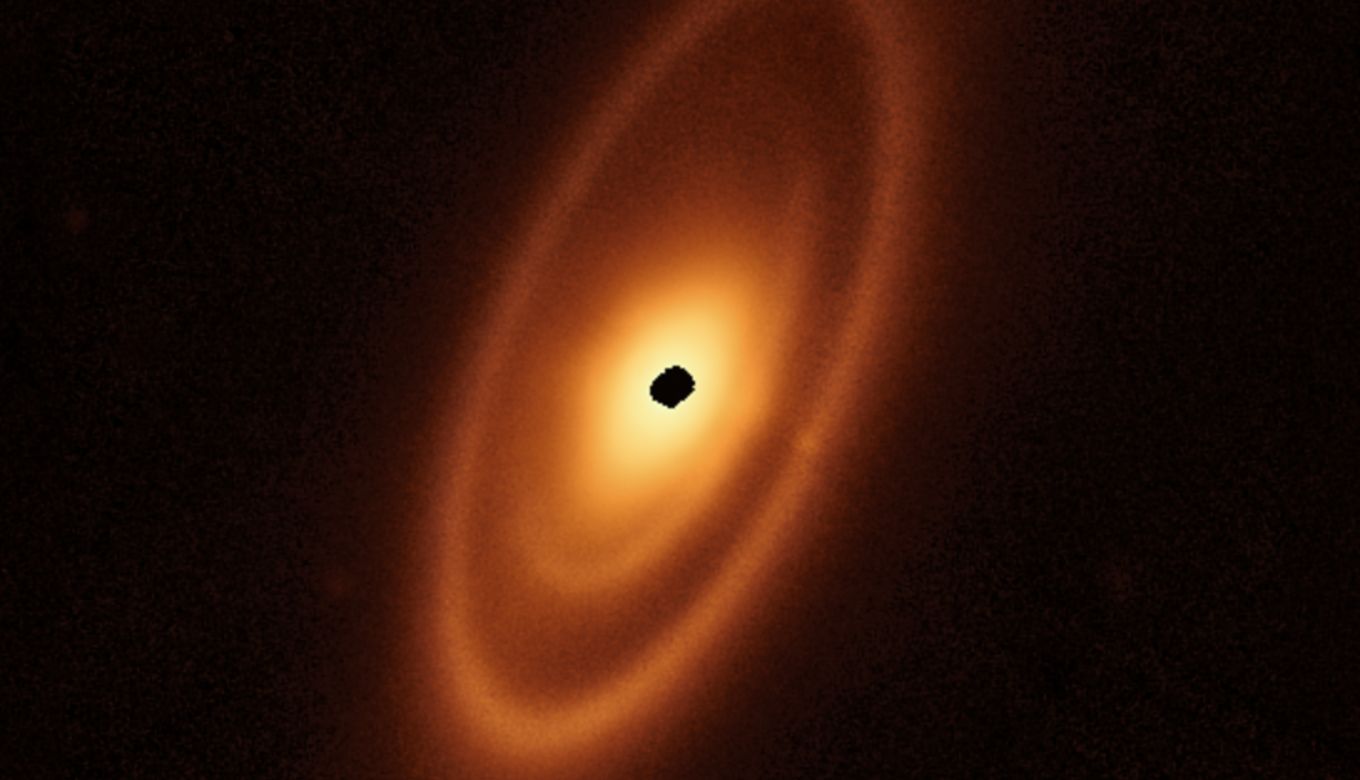James Webb Space Telescope detected the Fomalhaut, a star approximately 25 light years from Earth, which has an asteroid belt that may be gravitationally shepherded by unseen planets.
There are approximately over 1 million known main- asteroid belts. There are so many other asteroid astronomers searching for it.
Where this New Asteroid Belt is Located?

The Image of the James Webb Mid-Infrared Instrument (MIRI), revealed the three belts which are 14 billion miles from the stars. (Image Credit: NASA,ESA)
A young star Fomalhaut age of roughly 440 million years old a young star, is in its planet-forming phase. Fomalhault is the 18th brightest star in the night sky, and the JWSTs mid-infrared instrument reveals its unseen and highly dynamic stellar system.
The Fomalhaut star has debris of disk around it. The discovery of dust, pebbles, and other remnants of collisions was discovered in the early 1980s It is similar to the Kuiper belt in our own solar system, the Kuiper belt is the doughnut-shaped ring of icy objects just beyond the orbit of Neptune between 30 and 55 times Earth’s orbit from the sun.
This new asteroid belt is misaligned compared to the outer debris of the disk, suggesting an active planetary system is shepherding the asteroid belt into shape. James Webb also shows a large dust cloud within the outer ring, potentially caused by another collision, which has been dubbed the “Great Dust Cloud”.
Hubble Space Telescope and Herschel Space Observatory as well as Atacama Large Millimeter/Submillimeter Array (ALMA) have previously taken sharp images of the outermost belt of the Fomalhaut star.
The inner belt image for the first time resolved by the JWST where astronomers found the asteroid belts.
How These Asteroid Belts Form Inside the Stars’ Disks?

The two astronomers Immanuel Kant and Pierre-Simon Laplace independently developed the theory in the 1700s about the protoplanetary disk formation around the stars. The sun and planets formed from a rotating gas cloud that collapsed and flattened due to gravity. Debris disks develop later, following the formation of the planets and dispersal of the primordial gas in the systems. They show that small bodies like asteroids are colliding catastrophically and pulverizing their surface into huge clouds of dust and other debris. Observation of their dust to the structure of an exoplanetary system, reaching down to the earth-sized planets and even asteroids, which are much too small to see individuality.



